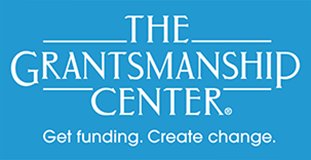The good news—a foundation wants to look closely at your nonprofit organization because there’s the possibility of a major grant. You’ve heard that a site visit is planned, a review of your board’s participation is in the works and a thorough financial examination is part of the process.
Blog
What Can We Say Besides, "We're Still Here?"
Your nonprofit has been around a long time—congratulations, statistics suggest that a third of nonprofits fail after 10 years, half of all new nonprofits shrivel up after only a few years. If your organization has weathered economic downturns (and Covid lockdowns), you’re doing just fine.
The Water, The Hose, and the Proposal
It’s an often-used metaphor: funders want to pay for the water to put out a fire, but not the hose it takes to deliver the spray. How to make a compelling case for general operating support?
The Doctor Will See You Now
Routine medical exams almost always measure a number of vital signs: temperature; pulse rate; blood pressure; respiration. Often, too, there’s height and weight, questions about changes, an overall assessment. Nonprofits might borrow this approach.
A Few Words About Word Limits
Everybody from Voltaire to Bill Clinton is credited with the quip: “If I had more time I would have written a shorter letter.” The truth buried in the quip is one that contemporary proposal writers grapple with. Many foundation application forms now routinely ask for the whole story, complete with details, in a 100-or-500-word box. It’s so easy to rattle on and on about your program, so hard to say it succinctly.
How Long is a Long-Range Plan?
Nonprofits know they need plans. Like any other organization, they have goals and objectives, work to do, resources to gather and manage. This doesn’t happen in a vacuum or on the spur of the moment. It happens as the result of a planning process—deciding where you want to be at some date in the future, and how you want to get there.
The Problem Statement
They say be sure you’re asking the right questions before you start to spell out your answers. “They” must have been thinking about a persuasive proposal. It’s important to frame the problem, the challenge or the opportunity first, and then go about telling how you’ll address it.
Institutional Memory – Lest We Forget
Your nonprofit has a history of funding from a variety of foundations, a few local businesses, maybe a special-purpose state grant. Congratulations. Now a new person takes the proposal writer’s chair, it’s time for reports and renewals, so the newbie asks the basic questions: “Did we get a grant from the XYZ Foundation? How much? When? Who did we work with over there?”
DUNS Bites the Dust
If your organization applies for Federal funding, you’ve gotten to know the commercial data firm Dun & Bradstreet—more specifically its unique numeric identifier called the DUNS number. Your organization probably has (or had) a DUNS number, along with 300 million others, so the Feds could tell exactly which agency or organization you are.
The Case for Evidence-Based Methods
The need for the program has been established. The organization is credible and the budget is concrete. Now we lay out the methods section. Why are we doing our work this way? Well, that’s how we’ve always done it, it’s our traditional approach.












